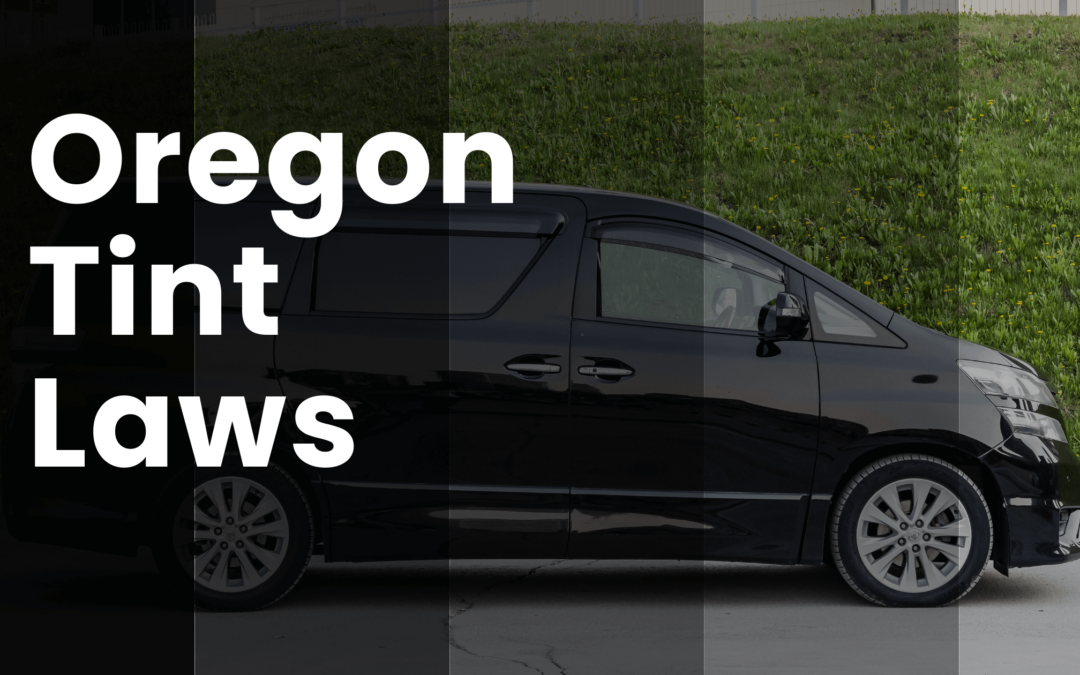Oregon Tint Laws
Oregon’s regulations for car window tinting, enacted in 2003, provide explicit guidelines regarding the darkness of tints, the level of reflectivity, and other crucial factors. Here, we offer a detailed breakdown of Oregon’s car window tinting laws to ensure your compliance.
Disclaimer
While I have a background in commercial law and strive to provide accurate and informative content, it’s important to note that I am not a legal expert. The information presented in this blog is based on my interpretation of the subject matter, and laws can vary by location and change over time. It is strongly recommended that readers verify all sources of information and consult with legal professionals or relevant authorities before making any decisions related to tint laws.
Understanding the Terminology Regarding Tint Laws
The most important part of the legislation is understanding what VLT is and how law enforcement services check or test the percentage.
What is VLT
VLT, or Visible Light Transmission, is a measure of the amount of visible light that can pass through a window tint or film. It is commonly used to determine the darkness or opacity of window tints, and it’s an important factor in window tinting laws and regulations.
VLT is typically expressed as a percentage. For example, a window tint with a VLT of 20% allows only 20% of visible light to pass through, making it relatively dark and less transparent. Conversely, a window tint with a VLT of 70% allows 70% of visible light to pass through and is much lighter and more transparent.
How do Law Enforcement services test the VLT percentage?
Window tinting laws vary by jurisdiction, and they often specify the maximum allowable VLT for different types of windows on a vehicle, such as the front windshield, front side windows, rear side windows, and rear window. These laws are designed to ensure that drivers have adequate visibility and that law enforcement can see into vehicles for safety and identification purposes. The manner that they go about testing the VLT is by using a VLT gauge/meter.
Here is a YouTube Short from @TrafficServices and @TorontoPolice showcasing the device and how it works. Even though it is in Canada, it still is helpful to understand how the tint darkness is measured.
Window Tint Darkness in Oregon:
The measure of visible light permitted through your vehicle’s windows, known as VLT (Visible Light Transmission), differs for sedans, SUVs, and vans.
Oregon Car Tint Law For Sedans:
- Windshield: Non-reflective tint is allowed on the top 6 inches of the windshield.
- Front Side Windows: Must permit more than 35% of light to pass through.
- Back Side Windows: These windows must also allow more than 35% of light transmission.
- Rear Window: The rear window must have more than 35% VLT.
Tint Law For SUVs and Vans in Oregon:
- Windshield: Non-reflective tint is permitted on the top 6 inches of the windshield.
- Front Side Windows: SUVs and vans must allow more than 35% of light to pass through the front side windows.
- Back Side Windows: SUVs and vans do not have specific restrictions regarding the darkness of tints on back side windows.
- Rear Window: Similar to back side windows, there are no specific restrictions for the rear window.
| Type of Window | Sedans | SUVs/Vans |
|---|---|---|
| Windshield | Non-reflective tint on top 6 inches | Non-reflective tint on top 6 inches |
| Front Side Windows | More than 35% of light transmission required | More than 35% of light transmission required |
| Back Side Windows | More than 35% of light transmission required | No specific restrictions on tint darkness |
| Rear Window | More than 35% VLT required | No specific restrictions on tint darkness |
Window Tint Reflection in Oregon:
Tints can reflect incoming light, mitigating glare and heat. Oregon’s tint law outlines the allowable levels of window reflection when using tints.
For Both Sedans and SUVs/Vans:
- Front Side Windows: Reflectivity must not exceed 13%.
- Back Side Windows: Similar to the front side, rear window reflectivity should not surpass 13%.
Additional Oregon Window Tint Rules and Regulations:
Oregon’s window tinting laws encompass several other key regulations:
Side Mirrors
If any window behind the driver is tinted, dual side mirrors are mandatory.
Restricted Colors
The law prohibits the use of red, gold, yellow, amber, or black tint colors.
Certificates
Tint installers are required to provide you with a certificate stating the light transmittance and reflectance.
Stickers
Oregon does not mandate stickers to identify legal tinting.
Medical Exceptions
Oregon allows medical exemptions for darker tints.
Regulations for Out-of-State Drivers
The same regulations apply to out-of-state drivers as those for drivers living in the State.
If you are from States such as Washington, Idaho, Nevada and California, you are expected to abide by these laws and regulations.
Penalties
Violations are classified as Class B traffic violations with a fine of $360.
It’s essential to understand that interpretations of Oregon’s tinting laws and regulations may differ across counties or residential areas. To ensure full compliance, it’s advisable to cross-check this information with your local Department of Motor Vehicles (DMV) or law enforcement authorities.
Our records regarding Oregon’s window tint laws were most recently updated in 2023. We aim to provide accurate, up-to-date information. Should you come across any inaccuracies or outdated details, please feel free to contact us. Your trust in our resources is invaluable, and we are dedicated to offering the most reliable information available.

